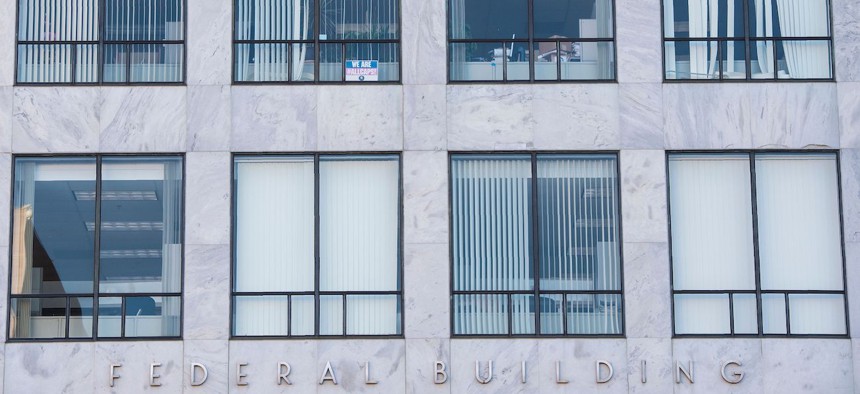
District of Columbia Mayor Muriel Bowser has called on the federal government to take more decisive action on its return to office policies or give up their leases. ANDREW CABALLERO-REYNOLDS/AFP via Getty Images
How Many Feds Are Back in DC Offices? A Watchdog Is Finding Numbers.
The Government Accountability Office is studying occupancy rates in federal agencies’ headquarters.
As the government’s landlord plans for its post COVID-19 pandemic work plans, a federal watchdog is studying occupancy rates in agencies’ headquarters in the Washington, D.C., area.
Since January, the Government Accountability Office has been collecting occupancy data for the buildings and they expect to have a report released by early summer, David Marroni, acting director for physical infrastructure at GAO, said during a roundtable on Wednesday hosted by the House Transportation and Infrastructure Committee’s Economic Development, Public Buildings and Emergency Management panel on the state of federal real estate. In addition to grappling with future-of-work plans, the federal government’s landlord also has to contend with the fact that in the next five years over half of its leases will expire.
“Right now, where the pendulum swinging is not set” in terms of how many federal employees are working remotely, said Nina Albert, commissioner of the General Services Administration's Public Buildings Service. What they are doing now due to the size and complexity of the portfolio is “working with each agency on what their plans are” because their needs vary. “However, there are agencies that are leading because they’re more confident in what their plans are,” Albert said, noting that GSA was working to right-size its portfolio long before the pandemic.
Earlier this year, District of Columbia Mayor Muriel Bowser called on the federal government to take more decisive action on its return to office policies or give up their leases. When asked about the mayor’s comments, Albert said they’re looking across the entire federal portfolio, which she thinks of in three buckets: the government long-term strategic assets; those that need to be put in the disposal pipeline and assets they aren’t sure what to do with yet.
In February, the House voted 221-206, mainly along party lines, to require federal agencies to bring back their telework policies and levels as of December 2019, before the pandemic. The Senate has not voted on the bill yet.
GSA’s budget request for fiscal 2024 looks to the future of work post-COVID-19, which includes giving GSA full access to the revenues and collections in the Federal Buildings Fund, which is the primary fund for financial administration of PBS’s activities. GSA needs this “in order to modernize and maintain existing buildings,” Albert said, adding it was important “to be able to serve the government over the long-term.”
Since 2003, “managing federal real property” has been on GAO’s high-risk list, which it issues every two years. Marroni said the next version of the high-risk list will be out next month.
Another discussion during the roundtable was what to do with the J Edgar Hoover building, where the FBI’s current headquarters is housed, when one of the three consolidated suburban headquarters is finally selected, a matter Maryland and Virginia lawmakers and their governors have been sparring over.
Albert said there are no “immediate plans” for the building, as it will be occupied until the new headquarters is ready. She also said GSA will assess if the federal government has a long-term need for it or should get rid of it.







